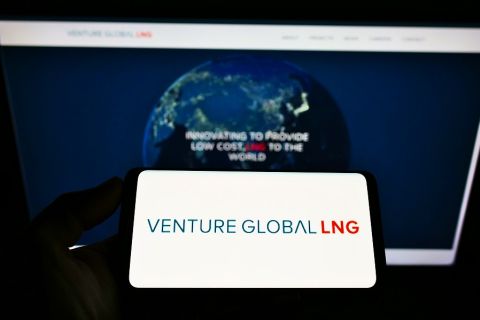When visiting the Russian federation for the first time, one thinks of those thousands of unfortunate adventurers who, at different stages of world history, have tested the patience, pride or indeed the very will to live of the mighty Russia. Many of those adventurers, whether Napoleon's Grand Army, Hitler's storm troopers or the Caucasian tribes, have learned, often to their detriment, that this country deserves awe and respect. Thus the common view in the West is that Russia is a huge, wild and only mildly safe place to venture into, particularly for business. Tales of Mafia-ridden streets, political instability, corruption and unforgiving winters still dominate perceptions of the Russian federation, breeding wariness and mistrust. Yet, when observing today's Russia and its achievements since the painful, yet peaceful collapse of the Soviet Union, it is respect and admiration that strikes the observer. From a ruined and discredited regime lacking popular support, the Soviet Union has given way to a federation gathering 145 million people in 21 republics. It has a $350-billion GDP and reported a much-acclaimed growth rate of 4.1% in 2002. The country's territory is Russia, its largest asset: roughly 1.8 times the geographic size of the U.S., it benefits from oil, gas, coal and strategic mineral deposits in abundance. Since the December 1991 final farewell to the Soviet Union, much has been achieved to put Russia back in the league of great nations. A new constitution was adopted in December 1993, following the creation of an independent Russian federation on August 24, 1991. A new state has painfully emerged from a decade of legislative reshuffle, administrative and political turmoil, and a great deal of instability. The Russian economy has suffered hard times and still slumbers way below its real potential. A decade after the Soviet Union imploded, Russia is still striving to establish a modern market economy and achieve economic growth that would benefit a larger part of its population. It offers a striking contrast to its Central European trading partners-Poland, Czech Republic and Hungary-which were mostly able to overcome the initial production declines that accompanied the launch of market reforms, and within three to five years. Instead, Russia's economy contracted for five years, while the executive and legislative branches dithered over the implementation of many of the basic foundations of a market economy. Strong budget deficits and the country's fragile financial institutions left it over-vulnerable when the global financial crisis struck in 1998. The climax was reached in August when the depreciation of the ruble and debt default by the government triggered a sharp deterioration in living standards for most of the population. The economy has subsequently rebounded, growing by an average of more than 6% annually during the 1999-2001 on the back of higher oil prices and a weak ruble. This strong recovery, along with renewed efforts at reform, led by the strong stance of President Vladimir Putin since December 1999, and his commitment to advance lagging structural reforms, has raised business and investor confidence over Russia's prospects for its second decade of transition. Yet serious problems persist. Russia remains strongly dependent on exports of commodities, particularly oil, gas, metals and timber, which together account for more than 80% of exports, leaving the country vulnerable to swings in world prices. In the meantime Russia's industrial base is increasingly obsolete and must be urgently replaced or modernized if the country is to achieve sustainable economic growth. Fueling the rebirth The oil and gas sector is traditionally the main economic motor of Russia, accounting for 30% of its GDP. From a position of leading world oil producer in the late 1980s, Russia saw its production dramatically dive. Within 10 years, and due to a lack of financing, Russia's crude oil output shrank by nearly half, from 11.5 million barrels a day in 1988 to only 6.1 million a day in 1998, with no signs of recovery in sight. In the past few years, however, a production revolution has taken place. Russia was already back to the second rank by 2001, even taking the lead in terms of production ahead of Saudi Arabia in February 2002 and again later during the same year. Meanwhile, OPEC was trying to get some production discipline from its members and cut production several times. As a non-OPEC member, Russia was able to increase production steadily and replenish its cash reserves on the back of high oil prices. It is hard to believe that merely a decade ago the Soviet oil empire (which happens to be the largest oil industry ever built) was falling apart, along with the debris of the biggest centrally planned economy in the world. With more than 7.4 million barrels per day of crude production, Russia is Saudi Arabia's only competitor for the world's top oil-producing title and is expected to hit 8 million barrels a day in 2003 and 10 million around 2010. The country is the world's second-largest oil exporter, with the world's eighth-largest oil reserves. It is also the world's second-largest energy consumer. It is also relevant that this spectacular development is no longer controlled or financed by the state. On the ruins of the state-run oil exploration, production and distribution system have arisen new major private companies, vigorously building their own "petropreneurship," notably during the initial stages through the well-publicized and controversial "loans for shares" schemes and other scandals. During the murky years of privatization, when financiers and their associated financial institutions were the major players in the process, a new generation of entrepreneurs took over the assets that were financially stranded and mismanaged. This triggered a race towards a consolidation of reserves and assets, building, in a limited amount of time, oil and gas groups that are now calling for attention on the world scene. When the financial community was hit by the 1998 crisis and low oil prices simultaneously, these companies had already secured access to oil reserves at some of the cheapest prices per barrel recorded in the industry's history. On the world stage Apart from the aroma of scandal surrounding their creation, the success of those vertically integrated companies is today striking, even by global standards. In terms of assets sizes, management quality, expertise and demeanor, the likes of OAO Yukos, OAO Lukoil, Tyumen Oil Co. (TNK) and Surgutneftegas have entered the first league of world oil companies. Even without its foreign assets, Lukoil's proven oil reserves amount to 16.7 billion barrels of oil equivalent and exceed those of ExxonMobil Corp. (13.9 billion oil-equivalent barrels of proved oil and gas reserves), themselves roughly equal to Yukos' (13.3 billion BOE). Tyumen Oil Co. (TNK) with 11.5 billion barrels controls more oil than does Royal Dutch/Shell Group, while Surgutneftegas' reserves (9.1 billion barrels) outstrip those of BP. The recent deal announced between BP and TNK, encompassing the creation of a 50/50 venture valued at $18.1 billion, has put BP on equal footing with Exxon-Mobil in terms of proven reserves. It has also created an entity that will increase BP's global oil and gas production 25%. BP will then overtake Royal Dutch/Shell Group in crude oil production and rival ExxonMobil, at a projected 2.5 million barrels a day. Lukoil's total oil production in 2002 (certain equity companies excluded) amounted to 78.2 million tons (about 20% of Russia's oil production), up 2.2% from 2001 with daily production figures of more than 1.3 million barrels. Meanwhile, Yukos is producing 1.5 million barrels a day (426 million barrels in 2001) and increased its production 18% in the first nine months of 2002. Its ambitions are far-reaching. The company has world-scale projects to increase its access to world markets. It is also jockeying with Lukoil for the top spot as Russia's largest producer. Early indications for 2002 suggest that it will win the title for that year. The sector also still contains a few state-owned organizations. Until December 2002, the two most interesting E&P organizations were Rosneft, a strongly vertically integrated company ranking seventh in terms of production at 13.5 million tons (2000 figure) and Russia-Belarus-controlled Slavneft. The latter, however, was privatized in December 2002. This much publicized and criticized auction process saw potential foreign buyers of 75% of Slavneft kept at bay (notably Chinese petroleum giant CNPC). The sale was one of the last opportunities offered to investors to grab large-scale Russian assets. It gathered $1.8 billion instead of the expected $2.5- to $3 billion and transferred Slavneft stakes to TNK and Sibneft, both already stakeholders in pre-sale Slavneft. This eagerly awaited sale didn't bring the levels of fairness and transparency expected by the international investment community and raised questions on the self-asserted willingness of the Russian government to develop a competitive sector abiding by international standards of business behavior. Nevertheless, on the private sector's side, the efforts put together by the Russian oil oligarchy to create strong, shareholder-driven and transparent organizations have been, finally, much acclaimed on the international business scene. Yukos chief executive officer Mikhail B. Khodorkovskiy has been at the forefront of this effort, turning Yukos into one of the most profitable as well as the most transparent oil companies of Russia. Yukos has also increased its visibility in the world's financial markets, with Level 1 ADRs being actively traded on a selection of European markets while it has engaged in active crude deliveries to the U.S. Lukoil has also developed a rather aggressive international strategy, both in E&P and downstream activities. It has acquired and is developing assets in the Caspian region, Algeria and even Iraq (with a big question mark on the future of its previously licensed West Qurna Field, now being taken away by Iraqi authorities). It is also seeking to purchase refining assets in central and eastern Europe and consolidating its Getty retail outlets in the U.S. Meanwhile TNK, now effectively teaming up with BP in the largest business deal struck in the sector in Russia in recent years, secured its first shipment of 1 million barrels of Urals-blend crude to North America last October and is looking to expand its international market reach. This surely points to the fact that Russia's oil community has understood the virtues of international exposure and the importance of a reliable reputation to secure market access and to bolster their position when the need to talk to capital markets occurs, and that is increasingly often. The Russian independents Focusing only on the newborn giants would leave a large part of today's Russian oil and gas industry in the dark. As in the rest of the world, the pioneering risk-takers who make the oil and gas sector such a vibrant business aren't necessarily those who occupy the foreground in the picture. Besides its shining new world-scale majors, Russia is host to a wealth of small to medium-size producers who, to live up to their designation as independents are trying to make their way through the hurdles of Russian legislation, tax system and hostile oversized competitors. Keen on partnerships and looking at their U.S. counterparts' experiences, the Russian federation's independents are hoping for better days. The connection of the Russian oil sector with the outside world is mutually important, especially at times of uncertainties of OPEC supplies and a gloomy perspective in the Middle East. Russian exports are the new lifeline of Europe and in the medium term, North America looks also set to be increasingly dependent on the federation's hydrocarbons. The limitation in export capacities through existing infrastructure demands a commitment to major new infrastructure projects. One features the partnering of oil majors Lukoil, Yukos, TNK and Sibneft for the construction of an arctic port in Murmansk. Yukos is also eyeing a possible partnership with CNPC and looking at the feasibility of a pipeline connecting western Siberia and undeveloped eastern Siberia fields to China. Meanwhile, pipeline monopoly Transneft is also considering expanding its reach through a large number of new projects. On the gas front, Russia's position is undisputed. It shares the privileged position of leader of the world's gas producers with the U.S., accounting for more than 25% of the world's output. It also accounts for one-quarter of the world's reserves and is therefore on this account the sole mega-player worldwide. One company stands out above the rest and has no rival in the world as the largest gas company and the biggest exporter: Gazprom accounts for 88% of Russia's gas production (output 2002: 521.7 billion cubic meters). This leaves little room for Russia's independent producers, who nevertheless strive to exist as they deal with market access, transportation and tax issues. Players are struggling to make room for themselves and the sector is expecting major changes in the years ahead. Within such a thriving industry, service operators have ample room for their own business development. On the ruins of the Soviet production system, local players have developed and managed to reach the highest standards of service quality and consistency. Mirroring the growth of Western oilfield-service companies in a much shorter period of time, they have developed and strengthened their market share and are today in direct competition with the world's leaders on the Russian market. International service leaders have also felt the Russian attraction and expanded their operations in the Federation. But local players use their understanding of the market and its specificity to prepare for the next stage of development. Major opportunities are to be found in increasing production capacity and divestment policies of oil majors and will provide fuel for growth. In this challenging environment, international operators have been watching closely, examining potential assets but also trying to circumnavigate legal reefs, tax loopholes and canvassing for the Russian federation's legislation to be revised, with moderate success. Some critical elements of its legislation are at present on standby, pending resolution of conflicting views and interests within the energy sector. Production-sharing-agreement (PSA) legislation was passed first in 1996, paving the way for world-class projects involving Shell, ExxonMobil and Mitsubishi, attracting multibillion-dollar investments. With changes in the Russian legal position regarding PSAs, new projects are suspended pending the goodwill of the Duma (the lower house) and millions of dollars of investment are waiting to be unleashed. Meanwhile, changes in the subsoil law, the tax regime and others are modifying the landscape for both local and foreign investors and are blurring the overall picture of the Russian oil and gas sector. The articles that follow this introduction will explain in detail today's Russian service sector, infrastructure, gas business, foreign-company opportunities for reserves and production in Russia, and legal structure.
Recommended Reading
Venture Global Acquires Nine LNG-powered Vessels
2024-03-18 - Venture Global plans to deliver the vessels, which are currently under construction in South Korea, starting later this year.
Imperial Oil Shuts Down Fuel Pipeline in Central Canada
2024-03-18 - Supplies on the Winnipeg regional line will be rerouted for three months.
Hess Midstream Subsidiary to Buy Back $100MM of Class B Units
2024-03-13 - Hess Midstream subsidiary Hess Midstream Operations will repurchase approximately 2 million Class B units equal to 1.2% of the company.
Pembina Pipeline Enters Ethane-Supply Agreement, Slow Walks LNG Project
2024-02-26 - Canadian midstream company Pembina Pipeline also said it would hold off on new LNG terminal decision in a fourth quarter earnings call.
TC Energy's Keystone Oil Pipeline Offline Due to Operational Issues, Sources Say
2024-03-07 - TC Energy's Keystone oil pipeline is offline due to operational issues, cutting off a major conduit of Canadian oil to the U.S.




